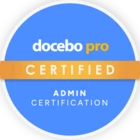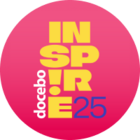Thank you to everyone who attended our July Release Readiness webinar. If you missed it, you can catch it here on demand.
We received many questions during the live event that we answered, however, below are the rest of the ones we weren’t able to answer during the live session. There are several so we’ve grouped them by topic and created a table of contents for easy reference.
AI Neural Search & Assistant
| Question | Answer |
|---|---|
| How does AI Neural Search respect user permissions, visibility, and content restrictions (e.g. branch, group, or enterprise visibility)? | The visibility criteria will be respected. This is a fundamental part of the project. There will be a system that manages visibility in a more restrictive way when it comes to conversational search, compared to standard search. For example, while a course in a catalog might appear in a normal search, it will not be returned by Harmony Search. This is because we do not want the tool to extract information from content that has not yet been purchased or does not have an active enrollment. All extracted information must, in fact, be accessible to the end user. If an enrollment for a course has expired, been archived, or if the course is under maintenance, the system will not consider that content as usable by the LLM to generate an answer to the user’s question. Similarly, if a learning material has an unmet prerequisite, it will be treated the same way. |
| What content types does Neural Search pull from — SCORM, video transcripts, PDFs, Rise courses — and can content be excluded from results? | In order to be used as a source for AI answers, a piece of platform content must:
In this MVP, content cannot be excluded, but we’re considering adding a denylist to allow customers to do so. |
| Is AI Neural Search included in our current subscription, or is there an added cost? How is it activated or configured? | Harmony Search is initially designed to be included in your plan at no additional cost. It will be released as a feature turned off by default, which can be enabled from the Artificial Intelligence panel accessible via the admin menu. It can be activated either for your own administrative account, in preview mode for testing, or for all users on the platform. In the case of an extended enterprise setup, it will also be possible to enable or disable the feature on a domain-by-domain basis. |
| Will the AI recommend additional learning paths and does it require tags or metadata to work effectively? | The new conversational feature of Harmony Search will initially work exclusively on the transcript of the content. |
| What data privacy and security measures are in place for AI features? Where is the AI data stored and how is PII protected? | Docebo strives to ensure that the principles of data protection by design and by default are considered during the lifecycle of each project, product, or feature Docebo introduces for its customers. Docebo Legal & Security Compliance teams work closely with customers to ensure that the relevant data protection regulations, including GDPR, UK data protection rules, PIPEDA, and US State laws are fully observed. In particular, the legal obligations that arise from these regulations are set out in the Docebo Data Processing Addendum, which applies to the provision of the Docebo services. Docebo AI models comply with strict data privacy and security standards. Third-party providers align with Docebo’s requirements, ensuring data privacy compliance for all AI functionalities.
|
Creator & Content Management
| Is Creator included in the base package permanently or only as a trial? Will it support SCORM-like features such as interactive images and accordions? | Creator will be included in all installations by default. At this time, we will only be able to create xAPI packages, while other formats are still being considered. Features such as interactive images and accordions are not available at this time, but they are planned for Q3 2025. |
|---|---|
| How mobile responsive is Creator, and are there improvements planned for usability on iOS/Android? | All courses created by Creator are mobile-responsive. We are aware of some limitations in rendering the lessons on certain devices and browsers, but we are working on improving the user experience to make the content more fully responsive. |
| Can we duplicate Creator materials for consistency across courses, and will there be more layout customization (e.g. reducing white space, auto-translation rules)? | You cannot duplicate a Creator course at this time. We'll work in Q4 2025 to add some options to allow users to select what they'd like to copy. These duplicates can then serve as a standard baseline for mass rollout to multiple audiences. As for layout customization, this will vary for each course; you can have more or less white space, depending on how you'd like to design them. For auto-translation, you'll still need to ensure those courses are translated via AI. The user will be able to choose the language in their UI, but those languages must be activated when translating in Creator. |
| Can content built in Creator be exported or downloaded? Is there a way to manage versioning and edits collaboratively? | Currently, content created in Creator can only be exported into the Docebo system. The ability to export into other formats or areas of the system is being considered for future development. Finally, multiple users can collaborate on a Creator course. Still, a more advanced collaboration layer (visual indicators, invite other users with different roles, adding and replying to comments) will come in Fall 2025. |
| Will we be able to share Creator content for SME review and comments without publishing as a course? | A more advanced collaboration layer (visual indicators, invite other users with different roles, adding and replying to comments) will come in Fall 2025. |
Learning Plans & Persistent Completion
| What does “recalculating enrollments” actually do, and how are completions tracked when new materials are added to a learning plan? | Recalculating enrollments updates the status of a learning plan by re-evaluating the learner's actual enrollment and completion status across the courses included in the plan. In essence, it replicates the legacy behavior (prior to the Persistent Completion feature), where the learning plan status was dynamically derived from the course enrollments. When a new course is added to a learning plan:
|
|---|---|
| Will there be support for soft deadlines or due dates in learning plans, rather than just validity dates? | Support for soft deadlines in learning plans is in our plan. On the other hand, there are no plans to introduce a validity date at the learning plan level (as opposed to enrollment validity dates, which already exist) |
| How will persistent completion be managed — can we see who completed what version of a learning plan, and will new content auto-assign? | At the moment, learning plan versioning is not supported, and this applies to enrollments as well — we don’t track completions against specific historical versions of a learning plan. The main goal of the persistent completion feature is to allow administrators to preserve the “completed” status, even if new courses are added — avoiding the previous default behavior where completion was recalculated automatically. On the reporting side, a dedicated field "Completed courses (at the moment of completion)" will be available, so admins can identify whether the learning plan has changed after a user completed it |
| Are there updates coming for learning plan-specific notifications (e.g. learning plan purchased, expiration, or renewal notices)? | While we’re aware that this area could be improved, there are no specific releases planned related to learning plan notifications — neither as part of the persistent completion feature nor in the short-term roadmap. |
| Can we report on completion status and filter enrollments by it within a learning plan? | Yes! we have added the "enrollment status" filter within the enrollment tab of the learning plan |
QR Code Attendance & ILT Tracking
| How does the QR code attendance feature work — does it require learners to be pre-enrolled, and can it be used for virtual ILTs? | To mark attendance, learners must be enrolled in a session. QR code-based attendance is available only for in-person events and is not supported for virtual sessions. |
|---|---|
| Will there be safeguards to prevent learners from scanning the QR code early and leaving the session? | A 30-minute grace period is in place, starting 30 minutes before the session begins and ending 30 minutes after it concludes. However, this does not prevent a learner from physically leaving the classroom. |
| Can admins or instructors manually mark attendance if a learner forgets to scan the QR code? | Yes |
| Is QR code attendance supported across all apps (Go Learn, branded app), and does it require geolocation or mobile login? | Yes, this feature is supported by both GoLearn and the branded app. Location tracking is optional and can be enabled by the instructor during the setup phase |
| Will there be reporting available for QR code attendance, and is this part of core functionality or an upgrade? | This report has not been implemented yet, but it can be considered during a future phase of improvements |
Observation Checklists
| Will we be able to report on observation checklist results — both summary and detailed views? | Yes. This dual reporting capability will be available in the upcoming release of the new Insights dashboard, which will offer both a consolidated overview and detailed breakdown of checklist data. Currently, results are only visible one checklist at a time. |
|---|---|
| Can multiple observers be assigned, and how does it work if only one is required to complete the checklist? | Yes, multiple observers (both managers and custom users) can be assigned. All assigned observers can contribute by filling out checklist items, but only one, typically the one who completes the final item, will be able to submit the checklist. |
| How is checklist versioning managed — can we see which version a user completed if changes are made post-assignment? | Checklist versioning is not currently supported. This is a known limitation and is being actively explored as a potential enhancement. |
| Are there plans to support CSV upload of checklist results or allow deeper customization of checklist workflows? | Direct CSV upload of checklist results is not currently supported. However, the upcoming release of Learn Data may provide a viable alternative for analyzing and managing checklist data externally. As for workflow customization, we are actively exploring enhancements to offer greater flexibility. |
| Can we automate checklist assignments based on roles or user actions? | Not at the moment. However, this is a valuable suggestion and has been noted for future evaluation. |
Notifications
| Will the new notifications system allow more granular targeting (e.g. catalog-specific alerts, session cancellations, course edits)? | No, the primary objective of the new implementation is to replace the legacy notification component, which has been facing increasing issues with reliability and usability. We are rebuilding the engine to preserve the current behavior while introducing several enhancements, including:
We are also actively collecting feedback to identify opportunities for further improvements in a planned second phase of development. |
|---|---|
| Is there a plan to make logs more accessible and meaningful — including what the user actually received, for audit or HR verification? | We are also actively collecting feedback to identify opportunities for further improvements in a planned second phase of development. |
| Can we report on notification open/click rates to assess effectiveness and ROI? | No |
| Will supervisors be able to verify communications received by their team via logs? | Superadmins and power users will have access to the LOG panel to verify whether a notification has been successfully sent |
| Are there settings to control whether notifications are sent across extended enterprise, or scoped only to the main platform? | Yes, notifications can be filtered by branch, and dedicated shortcodes for extended enterprise accounts have been added. For more information, please refer to this article. |
Catalog Management & Search
| What improvements are coming to the catalog management UI, and will it support searchable descriptions, default columns, or multicurrency? | The management UI introduct the search box, which works on titles, codes and descriptions. Multicurrency support will be supported in late 2026 with a specific feature. |
|---|---|
| Can catalogs be included in regular reporting and filtered like other course data (not just via Insights)? | No changes on the reporting side. |
| Will new catalog features allow us to filter or restrict content by pricing or access group? | No |
| Is it possible to suppress external or purchased content from search results? | No |
| Can enrollment links or catalog assignments be generated directly from course management menus? | Yes you can assign courses to catalogs in the course management. |
Reporting & Insights
| Will there be enhancements to reporting on evaluations, ILTs, and new features like Neural Search or checklists? | Not in this release. We focused on an Insights dashboard to display data related to Learning Evaluation. |
|---|---|
| Will Insights Dashboards include filters for catalogs, certificates, or persistent completions? | Filtering by course catalogs was already available prior to this release. In this release, we introduced some updates to reflect changes in the persistent status of enrollments within the Learning Plan. |
| Is there any ability to report on certificates automatically updating with course renewals or learning plan changes? | No |
| Will reporting be updated to allow clear distinction between current vs. legacy data when content is replaced or archived? | We haven’t made any improvements to reporting on archived data in this release. Some features to distinguish archived data from live data were implemented some time ago. However, there are still some limitations due to the archiving process itself, which we’re currently working to understand and address. |
Skills
| Can we expect skill assessments to include self-ratings (e.g. novice to expert) and show team or org-level skill averages? | Skill assessments are primarily done by the individual learner, and, if configured, there might additionally be suggestions from the manager regarding the assessment. As for an organizational-level overview, it does not exist yet. However, there is a Skill Overview within the My Team page." |
|---|










